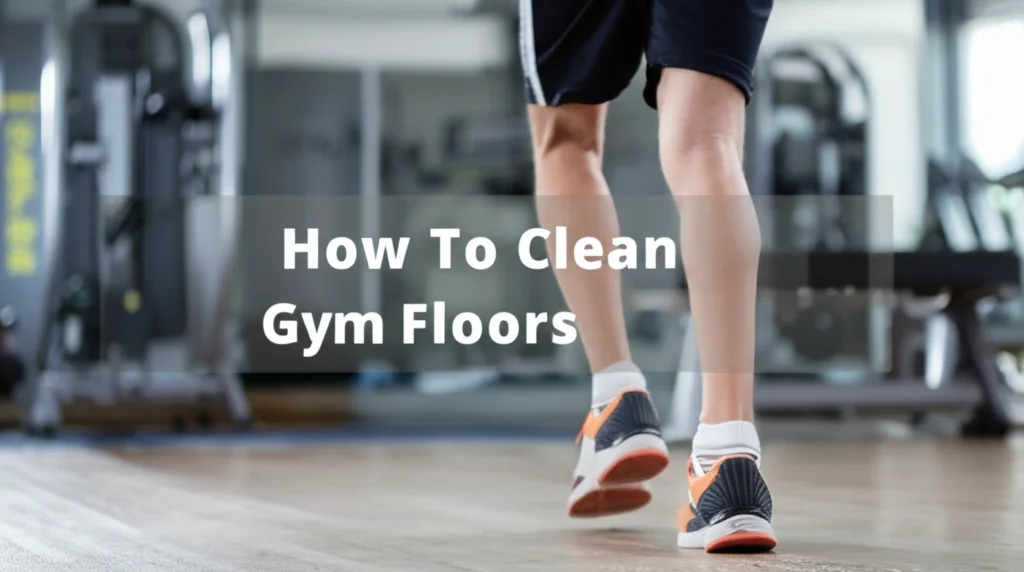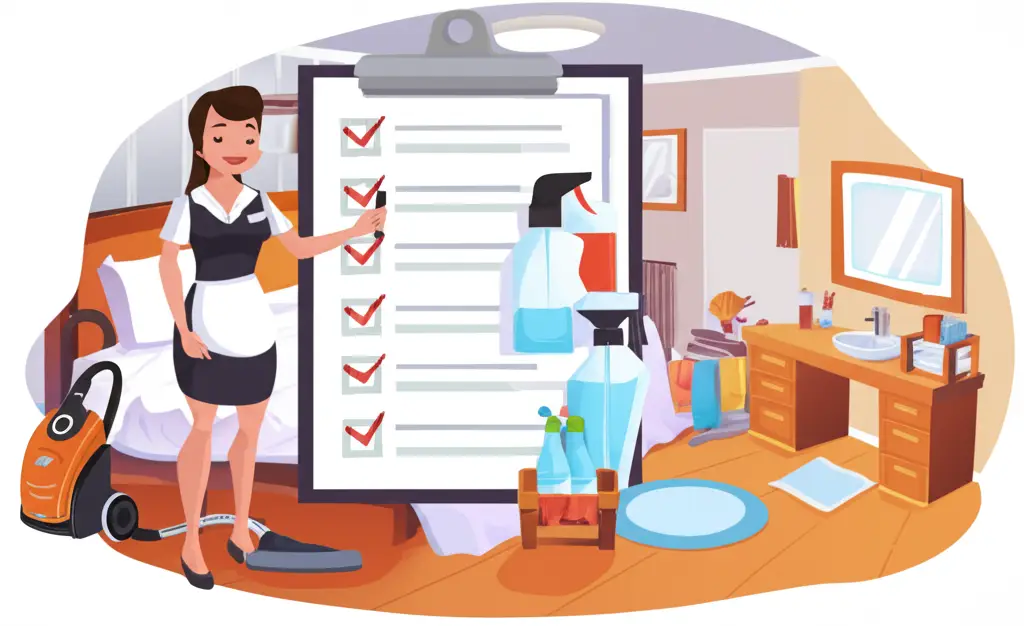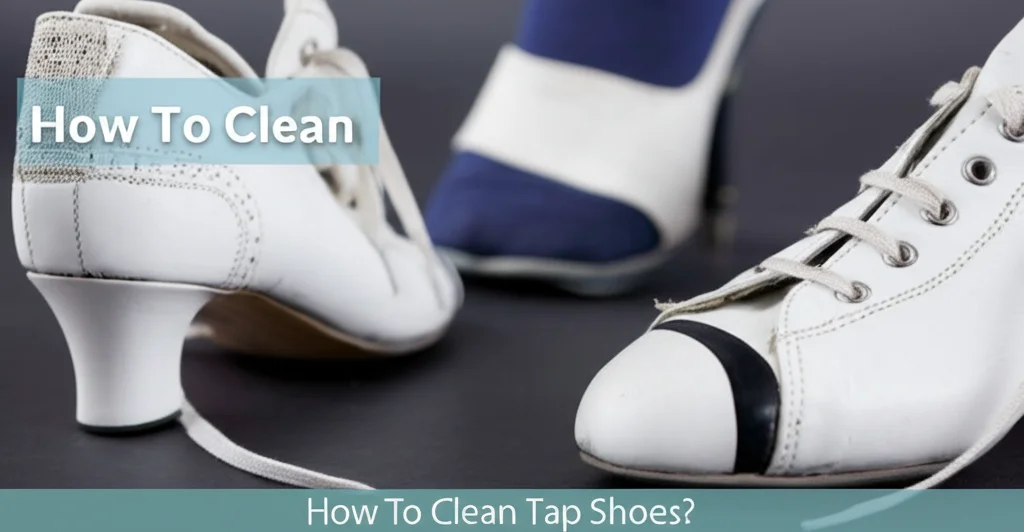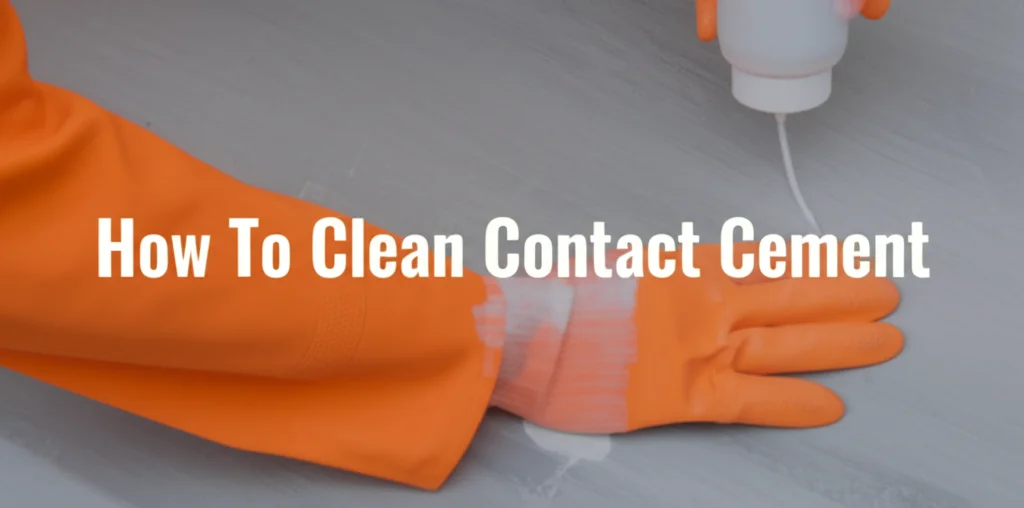· Cleaning Guides · 10 min read
How To Clean Gym Floors

How to Clean Gym Floors: The Ultimate Guide for All Floor Types
Maintaining clean gym floors isn’t just about aesthetics—it’s essential for safety, performance, and longevity of your investment. Whether you’re managing a commercial facility or maintaining a home gym, proper cleaning techniques can significantly extend the life of your floors while ensuring optimal performance for athletes and fitness enthusiasts alike.
Key Takeaways:
- Different gym floor types require specific cleaning methods and products
- Regular maintenance prevents costly damage and repairs
- Proper equipment selection saves time and improves results
- DIY solutions can be effective for home gym maintenance
- Professional cleaning is recommended for large facilities 1-2 times annually
In short: Cleaning gym floors properly involves identifying your floor type, using appropriate cleaners, establishing a regular maintenance schedule, and having the right tools for the job. Whether it’s wood, rubber, or vinyl, each surface demands specific care to maintain safety and extend longevity.
Types of Gym Floors and Their Specific Cleaning Requirements
Gym floors come in various materials, each with unique cleaning needs. Understanding your specific floor type is the first step toward effective maintenance.
Hardwood Basketball Court Floors
Hardwood floors, commonly found in basketball courts and multipurpose gyms, require delicate handling. These floors are typically finished with polyurethane coatings that need special care to preserve their shine and protective properties.
For daily maintenance, a dust mop treatment with a microfiber dust mop is essential to remove abrasive particles that can scratch the surface. Weekly cleaning should involve a slightly damp mop with a pH-neutral cleaner specifically formulated for wood gym floors. Avoid excessive water, which can seep into seams and cause warping or cupping.
For stubborn scuff marks, a soft tennis ball or specialized rubber can often remove marks without damaging the finish. When deeper cleaning is necessary, a low-moisture auto scrubber designed for wood floors delivers the best results.
Rubber Gym Flooring
Rubber flooring is popular in weight rooms and CrossFit facilities due to its durability and shock absorption. These floors require different cleaning approaches than hardwood.
For daily maintenance, vacuum or sweep to remove debris. For regular cleaning, use a neutral pH cleaner diluted according to manufacturer recommendations. Avoid harsh chemicals like bleach or ammonia, which can break down the rubber and cause discoloration over time.
For deep cleaning, a low-speed buffer with a soft brush attachment can effectively clean textured rubber surfaces. If odor is an issue, specialized rubber floor cleaners with deodorizing properties can help maintain a fresh environment. Some rubber floors benefit from occasional conditioning to prevent drying and cracking in low-humidity environments.
Vinyl and PVC Athletic Flooring
Vinyl and PVC flooring offer versatility and are common in multipurpose athletic spaces. These synthetic floors are generally easier to maintain than wood but still require proper care.
Daily maintenance should include dust mopping to remove dirt and debris. For regular cleaning, a neutral pH cleaner is sufficient, applied with a microfiber mop or auto scrubber. Avoid abrasive scrubbers that might damage the surface.
For periodic deep cleaning, a rotary floor machine with a soft pad can help restore shine and remove stubborn soil. If your vinyl floor has lost its luster, a specialized restorer can help bring back the original appearance without the need for replacement.
Essential Cleaning Equipment for Gym Floors
Having the right tools makes gym floor maintenance more efficient and effective. Here’s what you’ll need based on your facility size and floor type.
Professional Cleaning Machines
For large facilities, investing in professional equipment can save time and labor costs. Basketball gym floor cleaning machines typically include:
- Auto scrubbers with appropriate floor pads for your surface type
- Specialized floor burnishers for wood floors
- Industrial vacuum systems with HEPA filtration
- Rotary floor machines for deep cleaning
For rubber floors specifically, look for rubber floor cleaning machines that offer gentle yet effective cleaning power. These machines often feature cylindrical brushes that can clean textured surfaces effectively without damaging the material.
Manual Cleaning Tools
For smaller gyms or home setups, manual tools can be sufficient:
- Microfiber dust mops (18-48 inches depending on your space)
- Flat microfiber mops with interchangeable pads
- Soft-bristled push brooms
- Two-bucket mopping system to separate clean and dirty water
- Spray bottles for spot cleaning solutions
Quality matters when selecting manual tools. Invest in commercial-grade equipment with replaceable parts rather than disposable consumer-grade options for better long-term value and performance.
Daily Cleaning Routines for Different Gym Floor Types
Establishing a consistent cleaning schedule prevents dirt accumulation and extends the time between deep cleanings.
Quick Daily Maintenance Schedule
For all gym floors, implement these daily practices:
- Dust mop the entire floor at least once daily, more frequently in high-traffic areas
- Spot clean spills and stains immediately to prevent damage and slip hazards
- Place and maintain proper entrance matting to reduce dirt tracked onto floors
- Inspect for damage or wear that might require attention
For busy commercial facilities, consider dust mopping multiple times throughout the day, especially during peak usage periods.
Weekly Deep Cleaning Process
Once or twice weekly, perform more thorough cleaning:
- Remove all equipment from the floor area being cleaned
- Dust mop thoroughly to remove all loose debris
- Clean with appropriate cleaner and equipment for your floor type
- Allow adequate drying time before resuming use
- Inspect and address any issues noted during cleaning
Scheduling weekly cleaning during closed hours or low-usage times minimizes disruption while ensuring proper drying time.
How to Clean Gym Floors at Home
Home gym maintenance follows similar principles to commercial settings but on a smaller scale.
DIY Cleaning Solutions for Home Gym Floors
For rubber home gym floors, a simple effective cleaner can be made with:
- 1 gallon of warm water
- ¼ cup of gentle dish soap
- Optional: 5-10 drops of essential oil (tea tree or lavender) for antimicrobial properties
Mix in a bucket and apply with a microfiber mop, being careful not to oversaturate the floor. Allow to air dry completely.
For vinyl home gym floors, a solution of equal parts water and white vinegar can be effective for routine cleaning. However, check manufacturer recommendations as some finishes may be sensitive to acidic cleaners.
Best Practices for Home Gym Maintenance
Home gym floors benefit from these simple practices:
- Use dedicated indoor shoes to reduce dirt tracking
- Place heavy equipment on protective mats to prevent indentations
- Wipe down equipment after use to prevent sweat damage
- Maintain consistent humidity levels to prevent warping (especially for wood floors)
- Consider a dehumidifier in basement gym locations to prevent moisture issues
Regular attention to your home gym floor extends its life significantly, protecting your investment and maintaining a safe workout environment.
Professional Cleaning and Maintenance Services
While regular maintenance can be handled in-house, professional services offer benefits for comprehensive care.
When to Call the Professionals
Consider professional cleaning services:
- For annual deep cleaning and refinishing of wood floors
- When water damage or other serious issues occur
- For application of new finish or sealant layers
- When specialized equipment is needed for large areas
- For restoration of severely neglected floors
Professional services typically include assessment, deep cleaning, repair of minor damage, and application of protective treatments tailored to your specific floor type.
Cost Considerations and Budgeting for Floor Maintenance
Professional gym floor cleaning typically costs $0.15-$0.45 per square foot for basic cleaning, while refinishing hardwood gym floors may range from $1.50-$5.00 per square foot depending on condition and location.
When budgeting for floor maintenance, consider:
- Daily in-house maintenance supplies and labor
- Quarterly professional cleaning for high-traffic facilities
- Annual refinishing or deep restoration as needed
- Equipment purchase or rental costs
- Training for maintenance staff
Investing in regular maintenance proves cost-effective compared to premature replacement or major restoration of damaged floors.
Troubleshooting Common Gym Floor Cleaning Challenges
Even with proper maintenance, challenges can arise. Here’s how to address common issues.
Removing Stubborn Marks and Stains
For scuff marks on wood floors, try:
- Rubbing with a clean tennis ball or basketball
- Using a pencil eraser for small marks
- Applying a small amount of approved wood floor cleaner with a microfiber cloth
For rubber floors with stubborn stains:
- Create a paste with baking soda and water
- Apply to the stain and scrub gently with a soft brush
- Rinse thoroughly and allow to dry
For persistent issues on any floor type, consult guidelines for cleaning discolored flooring or contact the manufacturer for specific recommendations.
Preventing and Addressing Floor Damage
Prevention is always preferable to repair. Implement these practices:
- Use proper protective equipment under heavy machines
- Install chair glides on all furniture
- Maintain appropriate humidity levels (35-55%)
- Address spills immediately
- Use proper entrance matting at all doorways
When damage occurs, consult flooring professionals promptly. Quick attention to bubbling, separating seams, or moisture issues can prevent more extensive damage.
Environmentally Friendly Cleaning Options
Sustainability is increasingly important in facility management. Green cleaning practices benefit both the environment and facility users.
Green Cleaning Products for Gym Floors
Look for cleaners with these characteristics:
- EPA Safer Choice certification
- Plant-based ingredients
- Low VOC (Volatile Organic Compound) content
- Biodegradable formulations
- Minimal packaging waste
Many manufacturers now offer effective green alternatives to traditional chemical cleaners without sacrificing cleaning power or increasing costs significantly.
Benefits of Eco-Friendly Maintenance Routines
Adopting green cleaning practices offers multiple benefits:
- Improved indoor air quality for athletes and staff
- Reduced environmental impact
- Decreased chemical sensitivity issues
- Enhanced public perception of your facility
- Potentially lower long-term health costs
Many facilities find that transitioning to greener practices also improves staff satisfaction and reduces sick days related to chemical exposure.
FAQ About Gym Floor Cleaning
What is the best mop for cleaning rubber gym floors? Microfiber flat mops with interchangeable, washable pads are ideal for rubber gym floors. These mops effectively trap dirt and debris without scratching the surface and can be used with minimal moisture to prevent damage to subflooring or adhesives.
How often should commercial gym floors be professionally cleaned? Commercial gym floors should receive professional deep cleaning 1-2 times annually, with wood floors typically requiring refinishing every 3-5 years depending on usage. High-traffic facilities may benefit from quarterly professional cleaning in addition to daily maintenance.
Can I use a steam mop on rubber gym flooring? Steam mops are generally not recommended for rubber gym flooring as excessive heat and moisture can damage the adhesive underneath and potentially cause warping or bubbling. Instead, use appropriate cleaning methods for rubber surfaces with minimal moisture.
How do I remove gum from my gym floor? For gum removal, freeze the gum with ice or a commercial freezing spray, then gently scrape away with a plastic scraper. Clean any residue with an appropriate cleaner for your floor type. Never use sharp metal tools that could damage the floor surface.
What cleaning products should I avoid on wood gym floors? Avoid ammonia, bleach, oil soaps, abrasive cleaners, and any products containing wax on wood gym floors. These can damage the polyurethane finish, cause dulling, or create slippery conditions. Always use cleaners specifically formulated for wood athletic floors.
How can I tell if my gym floor needs refinishing? Signs your wood gym floor needs refinishing include visible wear patterns in high-traffic areas, dull appearance that doesn’t improve with cleaning, water not beading on the surface, or visible scratches that catch dirt. Professional inspection can determine if screening and recoating is sufficient or if full sanding and refinishing is needed.
Final Thoughts on Maintaining Pristine Gym Floors
Proper gym floor maintenance is an investment in both safety and longevity. By understanding your specific floor type and implementing appropriate cleaning routines, you can ensure your facility remains attractive and functional for years to come.
Remember that consistency is key—daily attention prevents the need for more intensive restoration later. Train all staff in proper cleaning techniques and establish clear protocols for addressing spills and damage immediately when they occur.
Whether managing a commercial facility or a home gym, the principles remain the same: use appropriate cleaners, invest in quality equipment, follow manufacturer guidelines, and address problems promptly. With this approach, your gym floors will continue to perform well and look great, contributing to a positive experience for everyone using your facility.
For more specific guidance on cleaning other surfaces in your facility, explore resources on how to clean floor grout without scrubbing or maintaining luxury vinyl plank flooring in adjoining areas.




